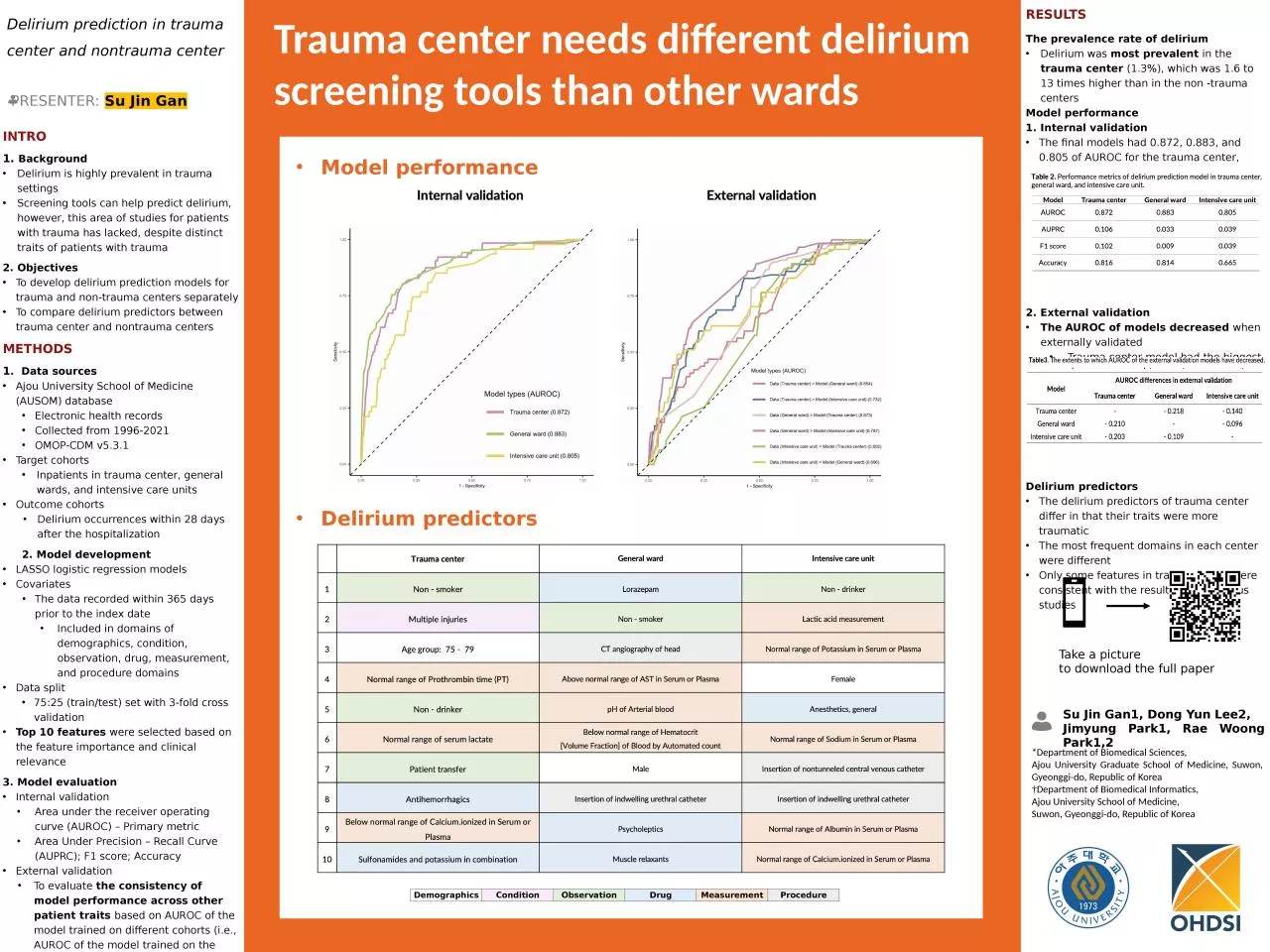

INTRO 1 Background Delirium is highly prevalent in trauma settings Screening tools can help predict delirium however this area of studies for patients with trauma has lacked despite distinct traits of patients with trauma ID: 1010809
Download Presentation The PPT/PDF document "Trauma center needs different delirium ..." is the property of its rightful owner. Permission is granted to download and print the materials on this web site for personal, non-commercial use only, and to display it on your personal computer provided you do not modify the materials and that you retain all copyright notices contained in the materials. By downloading content from our website, you accept the terms of this agreement.
1. Trauma center needs different delirium screening tools than other wardsINTRO1. BackgroundDelirium is highly prevalent in trauma settingsScreening tools can help predict delirium, however, this area of studies for patients with trauma has lacked, despite distinct traits of patients with trauma2. ObjectivesTo develop delirium prediction models for trauma and non-trauma centers separatelyTo compare delirium predictors between trauma center and nontrauma centersMETHODS1. Data sourcesAjou University School of Medicine (AUSOM) databaseElectronic health recordsCollected from 1996-2021OMOP-CDM v5.3.1Target cohortsInpatients in trauma center, general wards, and intensive care unitsOutcome cohortsDelirium occurrences within 28 days after the hospitalization 2. Model developmentLASSO logistic regression models CovariatesThe data recorded within 365 days prior to the index date Included in domains of demographics, condition, observation, drug, measurement, and procedure domainsData split 75:25 (train/test) set with 3-fold cross validationTop 10 features were selected based on the feature importance and clinical relevance3. Model evaluation Internal validationArea under the receiver operating curve (AUROC) – Primary metricArea Under Precision – Recall Curve (AUPRC); F1 score; AccuracyExternal validationTo evaluate the consistency of model performance across other patient traits based on AUROC of the model trained on different cohorts (i.e., AUROC of the model trained on the trauma center cohort when validated in the data set of the general ward cohortDelirium prediction in trauma center and nontrauma centerPRESENTER: Su Jin Gan*Department of Biomedical Sciences, Ajou University Graduate School of Medicine, Suwon, Gyeonggi-do, Republic of Korea†Department of Biomedical Informatics, Ajou University School of Medicine,Suwon, Gyeonggi-do, Republic of KoreaRESULTSThe prevalence rate of deliriumDelirium was most prevalent in the trauma center (1.3%), which was 1.6 to 13 times higher than in the non -trauma centersModel performance1. Internal validationThe final models had 0.872, 0.883, and 0.805 of AUROC for the trauma center, general ward, and ICU patients, respectively2. External validationThe AUROC of models decreased when externally validated Trauma center model had the biggest drop compared to nontrauma centersDelirium predictorsThe delirium predictors of trauma center differ in that their traits were more traumaticThe most frequent domains in each center were differentOnly some features in trauma center were consistent with the results from previous studiesSu Jin Gan1, Dong Yun Lee2,Jimyung Park1, Rae Woong Park1,2Delirium predictorsTake a picture to download the full paperModel performanceDemographicsConditionObservationDrugMeasurementProcedure